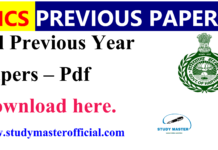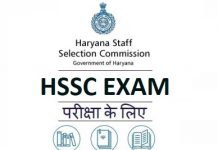History
- Punjab was continuously attacked by the Persian kings.
- In 321 BC, the Great Greek King Alexander won Punjab, after defeating Persian kings.
Ancient Punjab formed part of the vast Indo-Iranian region. - In later years Punjab saw the rise and fall of the Bactrians, Sakas, Mauryas, Greeks, Kushans and Guptas.
- Ghaznavi was followed by the slaves, the Ghoris, the Khiljis, the Tughlaks, the Lodhis and the Mughals.
- Fifteenth and sixteenth centuries was marked a period of the watershed in the history of Punjab.
- The Guru Gobind Singh, the tenth Guru, who transformed the Sikhs into the Khalsa.
- After two abortive Anglo-Sikh wars, Punjab was finally annexed to the British Empire in 1849. The fight against the British rule has started long before Mahatma Gandhi’s arrival.
- First, it was Namdhari sect, who believed in self-discipline and self-rule. After that, it was Lala Lajpat Rai who played a leading role in the Freedom Movement.
- Punjab was in the leaders of India’s freedom struggle on all fronts in India and abroad.
- Eight princely states of East Punjab were grouped to form a single state called PEPSU-Patiala and the East Punjab States Union-with Patiala as its capital. PEPSU was merged with Punjab in 1956. Later in 1966, Haryana was carved out of Punjab.The Punjab State is historically known as Sapta Sindhu that means the Land of Seven Rivers, the name Punjab was given by the Muslim conquest in the Indian subcontinent. Let us check out the major Historical events of Punjab. On the request of many readers, we have put the Punjab State GK in PDF downloadable format which is absolutely free.
1. Founded on 1st November 1966 2. Also Known As Sapta Sindhu 3. Ruled By Maurya, Mughals and Afghans 4. Major Historical Events Banda Singh Bahadur had freed Punjab from Mughal rule in 1709-10 Museums
1. Sanghol Museum Sanghol 2. Sikh Ajaibghar Balongi 3. Virasat E Khalsa Anandpur Sahib 4. Maharaja Ranjit Singh Museum Amritsar 5. Punjab Agricultural University Museum Ludhiana 6. The Partition Museum Amritsar 7. Maharaja Ranjit Singh War Museum Ludhiana 8. Punjab Rural Heritage Museum Ludhiana 9. Shaheed-E-Azam Museum Jalandhar 10 Sardar Bhagat Singh Museum Khatkar Kalan 11. Punjab State War Heroes Memorial & Museum Amritsar Geographical Structure
Punjab is situated in northwestern India and has a total area of 50,362 Km square. Punjab is surrounded by Pakistan on the west, Jammu and Kashmir on the north, Himachal Pradesh on the northeast and Haryana and Rajasthan on the south. Most of Punjab land is fertile, with many rivers and an extensive irrigation canal system.
A belt of hills extends along the northeastern part of the state at the foot of the Himalayas. Its average altitude is 300 metres above sea level, with a range from 180 metres (590 ft) in the southwest to more than 500 metres (1,600 ft) around the northeast border. The Shiwalik Hills extend along the northeastern part of the state at the foot of the Himalayas.
Below in this table, we have described all the essential Geographical Structure of Punjab you must know if you want to clear PSSC and HTET or any state-level government exams.
1. Total Area 50,362 square kilometres (19,445 sq mi) 2. Population 27,743,338 3. The rank of the state Area wise:- 20thPopulation wise:- 16th 4. Population Density 550/sq.km (1,400/sq mi) 5. State Bounded By - Pakistan to the West
- Jammu and Kashmir on the north
- Haryana and Rajasthan on the south
6. Soil & Minerals Soil - Alluvial Soil
- Saline and alkaline soil
- Desert Soil
Minerals
- Limestone
- Calcite
7. Major Crops - Wheat
- Rice
- Sugarcane
- Cotton
- Legume
- orange
8. Forest Area 1837 sq. km 9. Climate Subtropical 10. Major Flora - Mulberry
- peaches
- almonds
- figs
- oranges
- apples
11. Major Fauna - Fox
- squirrel
- mongoose
- deer
Rivers
Punjab is also called as the land of five water thus it is popular in examination purpose so many Punjab GK questions can be formed from rivers in Punjab section, the best part for candidates is they can download Punjab state gk in PDF free.





















